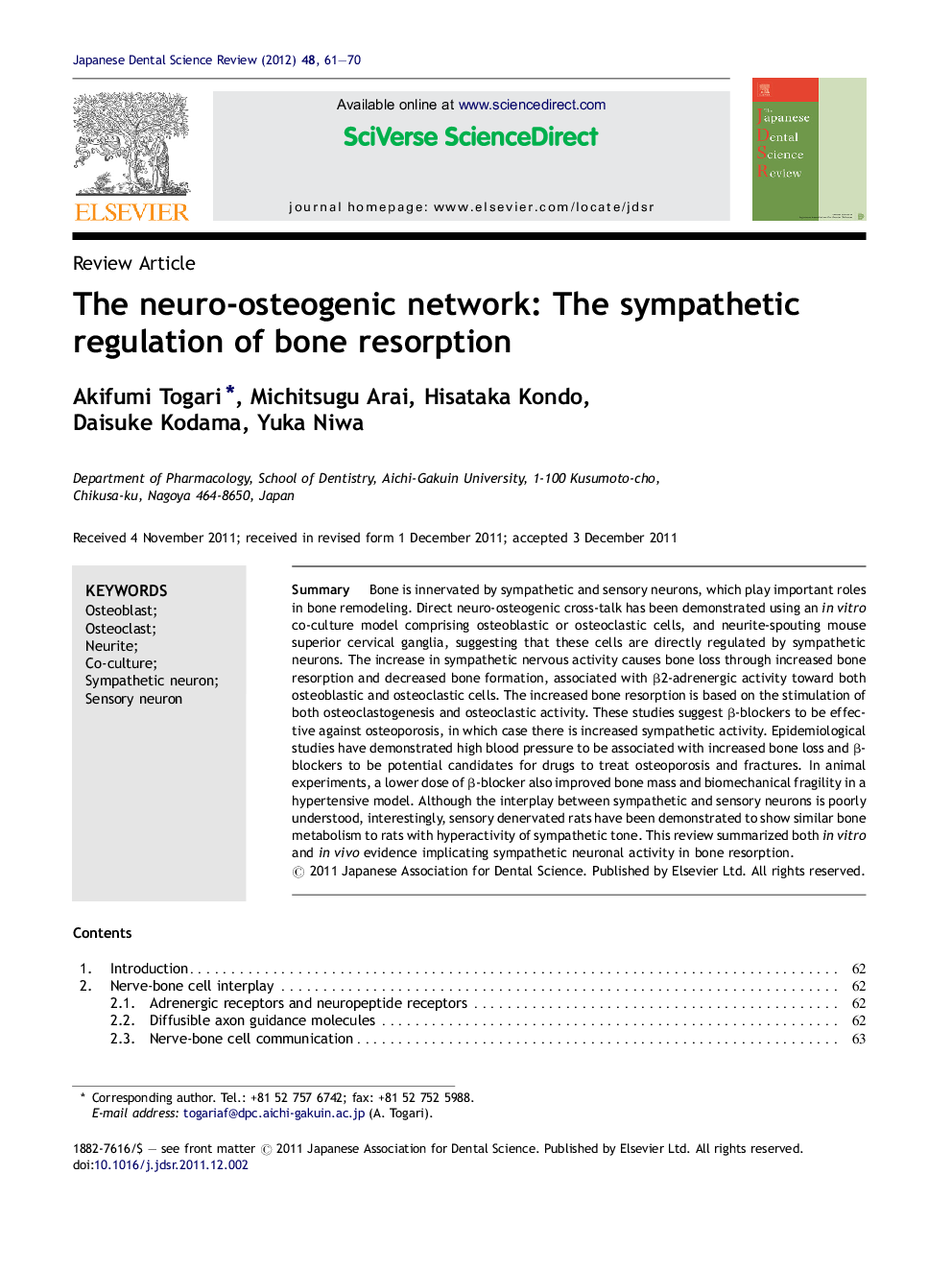| Article ID | Journal | Published Year | Pages | File Type |
|---|---|---|---|---|
| 3136192 | Japanese Dental Science Review | 2012 | 10 Pages |
SummaryBone is innervated by sympathetic and sensory neurons, which play important roles in bone remodeling. Direct neuro-osteogenic cross-talk has been demonstrated using an in vitro co-culture model comprising osteoblastic or osteoclastic cells, and neurite-spouting mouse superior cervical ganglia, suggesting that these cells are directly regulated by sympathetic neurons. The increase in sympathetic nervous activity causes bone loss through increased bone resorption and decreased bone formation, associated with β2-adrenergic activity toward both osteoblastic and osteoclastic cells. The increased bone resorption is based on the stimulation of both osteoclastogenesis and osteoclastic activity. These studies suggest β-blockers to be effective against osteoporosis, in which case there is increased sympathetic activity. Epidemiological studies have demonstrated high blood pressure to be associated with increased bone loss and β-blockers to be potential candidates for drugs to treat osteoporosis and fractures. In animal experiments, a lower dose of β-blocker also improved bone mass and biomechanical fragility in a hypertensive model. Although the interplay between sympathetic and sensory neurons is poorly understood, interestingly, sensory denervated rats have been demonstrated to show similar bone metabolism to rats with hyperactivity of sympathetic tone. This review summarized both in vitro and in vivo evidence implicating sympathetic neuronal activity in bone resorption.
